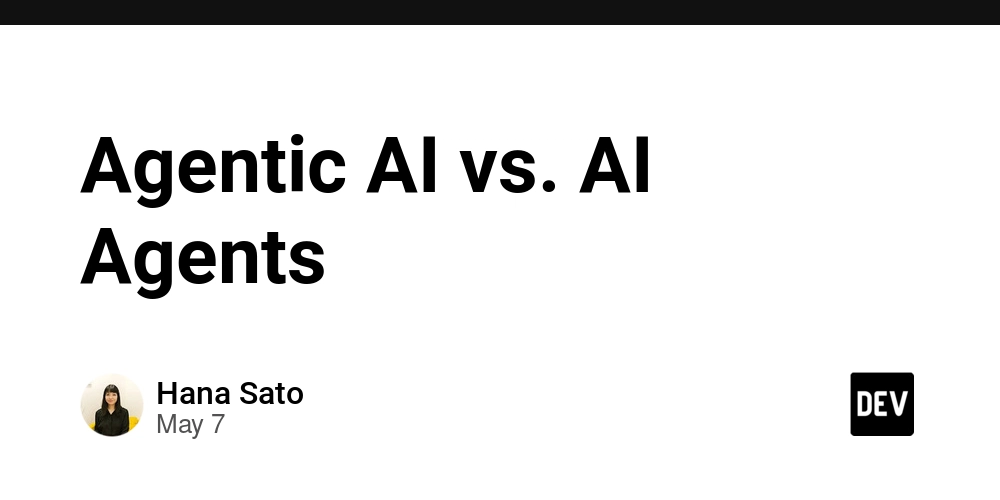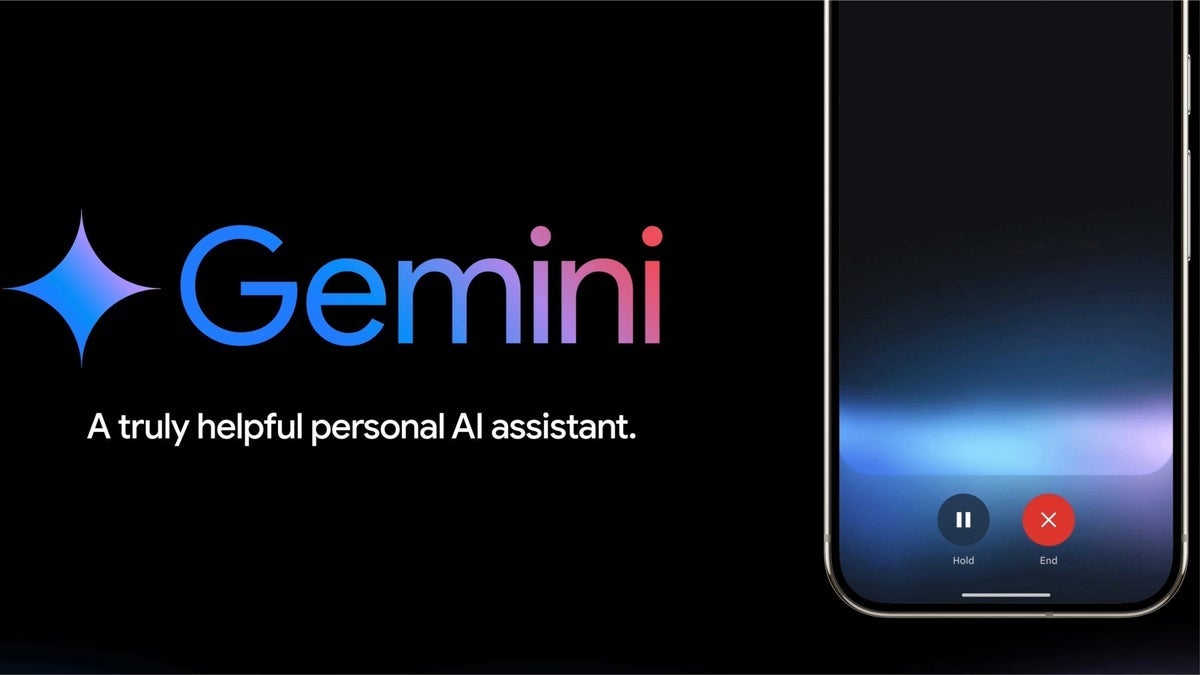Agentic AI vs. AI Agents
In the rapidly evolving world of artificial intelligence, the terms "Agentic AI" and "AI Agents" are often used interchangeably, but they refer to distinct concepts with varying capabilities and applications. While both fall under the broader umbrella of AI technologies, their functions, behaviors, and the level of autonomy they provide differ significantly. This article will explore the key differences between Agentic AI and AI Agents, helping businesses, technologists, and AI enthusiasts understand how these technologies are reshaping industries and driving innovation. What is Agentic AI? Agentic AI refers to a type of artificial intelligence that is capable of acting autonomously, making decisions, and interacting with its environment or other systems with minimal human intervention. Unlike traditional AI, which typically requires human input or predefined rules for decision-making, Agentic AI systems learn from data, adapt to their surroundings, and continuously improve their decision-making abilities over time. Agentic AI is designed to operate independently, solving problems and optimizing processes based on real-time data inputs. It is often used in applications where continuous monitoring and real-time decision-making are essential, such as in self-driving cars, automated financial trading systems, and advanced robotics. Key Characteristics of Agentic AI: Autonomy: Agentic AI can operate without human oversight, making decisions based on data and contextual understanding. Adaptability: It can learn from experience and adjust its behavior to optimize outcomes. Continuous Improvement: Agentic AI systems are built to improve over time, becoming more efficient and accurate as they process more data. Interaction: These AI systems can engage with users or other systems, adapting to changing inputs and dynamic environments. What are AI Agents? AI Agents, on the other hand, refer to systems or entities that perform tasks and make decisions based on predefined rules or algorithms. While AI Agents can automate processes and perform complex tasks, they are typically not as autonomous or adaptive as Agentic AI. Instead, AI Agents operate within a defined scope, carrying out actions based on instructions given by their creators or operators. AI Agents are often used in customer service (e.g., chatbots), process automation, and other scenarios where specific, rule-based tasks are needed. They are commonly found in applications such as virtual assistants, recommendation engines, and automated customer support. Key Characteristics of AI Agents: Predefined Behavior: AI Agents follow a set of predefined instructions and rules to complete tasks. Task-Specific: These systems are often designed to handle specific tasks or sets of tasks without the need for real-time learning or adaptation. Limited Autonomy: While they can perform tasks without direct human involvement, their decision-making capabilities are restricted to the rules they have been programmed with. Efficiency: AI Agents are efficient for automating repetitive tasks but may struggle with more complex, dynamic environments. Agentic AI vs. AI Agents: Key Differences While both Agentic AI and AI Agents are capable of performing tasks autonomously, there are key differences between the two in terms of their functionality, adaptability, and applications. 1. Level of Autonomy Agentic AI: Operates autonomously, with the ability to make decisions based on real-time data. It learns from its environment and improves over time, often requiring minimal human intervention. AI Agents: Follow predefined rules or scripts to complete tasks. They do not learn or adapt from new data unless specifically reprogrammed or updated by human operators. 2. Adaptability and Learning Agentic AI: Continuously learns from data, adapts to new situations, and can adjust its behavior to optimize decision-making. For instance, an autonomous vehicle powered by Agentic AI will continually adjust its driving decisions based on traffic conditions, weather, and road situations. AI Agents: Operate within a fixed framework, with limited learning capabilities. While they can process data and provide solutions based on predefined algorithms, they do not evolve over time unless explicitly programmed to do so. 3. Complexity of Tasks Agentic AI: Is designed to handle more complex tasks that require continuous decision-making and real-time adjustments. For example, AI in manufacturing can autonomously adjust production schedules based on real-time data, predicting machine failures before they occur. AI Agents: Are more suited for simpler, well-defined tasks that follow a set pattern. Customer support chatbots, for instance, are AI Agents that can handle basic queries but struggle with complex interactions or changes in user behavior. 4. Human Intervention Agentic AI: Requires little to no human intervention once set up. It is capable of ma

In the rapidly evolving world of artificial intelligence, the terms "Agentic AI" and "AI Agents" are often used interchangeably, but they refer to distinct concepts with varying capabilities and applications. While both fall under the broader umbrella of AI technologies, their functions, behaviors, and the level of autonomy they provide differ significantly. This article will explore the key differences between Agentic AI and AI Agents, helping businesses, technologists, and AI enthusiasts understand how these technologies are reshaping industries and driving innovation.
What is Agentic AI?
Agentic AI refers to a type of artificial intelligence that is capable of acting autonomously, making decisions, and interacting with its environment or other systems with minimal human intervention. Unlike traditional AI, which typically requires human input or predefined rules for decision-making, Agentic AI systems learn from data, adapt to their surroundings, and continuously improve their decision-making abilities over time.
Agentic AI is designed to operate independently, solving problems and optimizing processes based on real-time data inputs. It is often used in applications where continuous monitoring and real-time decision-making are essential, such as in self-driving cars, automated financial trading systems, and advanced robotics.
Key Characteristics of Agentic AI:
-
Autonomy: Agentic AI can operate without human oversight, making decisions based on data and contextual understanding.
-
Adaptability: It can learn from experience and adjust its behavior to optimize outcomes.
-
Continuous Improvement: Agentic AI systems are built to improve over time, becoming more efficient and accurate as they process more data.
-
Interaction: These AI systems can engage with users or other systems, adapting to changing inputs and dynamic environments.
What are AI Agents?
AI Agents, on the other hand, refer to systems or entities that perform tasks and make decisions based on predefined rules or algorithms. While AI Agents can automate processes and perform complex tasks, they are typically not as autonomous or adaptive as Agentic AI. Instead, AI Agents operate within a defined scope, carrying out actions based on instructions given by their creators or operators.
AI Agents are often used in customer service (e.g., chatbots), process automation, and other scenarios where specific, rule-based tasks are needed. They are commonly found in applications such as virtual assistants, recommendation engines, and automated customer support.
Key Characteristics of AI Agents:
-
Predefined Behavior: AI Agents follow a set of predefined instructions and rules to complete tasks.
-
Task-Specific: These systems are often designed to handle specific tasks or sets of tasks without the need for real-time learning or adaptation.
-
Limited Autonomy: While they can perform tasks without direct human involvement, their decision-making capabilities are restricted to the rules they have been programmed with.
-
Efficiency: AI Agents are efficient for automating repetitive tasks but may struggle with more complex, dynamic environments.
Agentic AI vs. AI Agents: Key Differences
While both Agentic AI and AI Agents are capable of performing tasks autonomously, there are key differences between the two in terms of their functionality, adaptability, and applications.
1. Level of Autonomy
-
Agentic AI: Operates autonomously, with the ability to make decisions based on real-time data. It learns from its environment and improves over time, often requiring minimal human intervention.
-
AI Agents: Follow predefined rules or scripts to complete tasks. They do not learn or adapt from new data unless specifically reprogrammed or updated by human operators.
2. Adaptability and Learning
-
Agentic AI: Continuously learns from data, adapts to new situations, and can adjust its behavior to optimize decision-making. For instance, an autonomous vehicle powered by Agentic AI will continually adjust its driving decisions based on traffic conditions, weather, and road situations.
-
AI Agents: Operate within a fixed framework, with limited learning capabilities. While they can process data and provide solutions based on predefined algorithms, they do not evolve over time unless explicitly programmed to do so.
3. Complexity of Tasks
-
Agentic AI: Is designed to handle more complex tasks that require continuous decision-making and real-time adjustments. For example, AI in manufacturing can autonomously adjust production schedules based on real-time data, predicting machine failures before they occur.
-
AI Agents: Are more suited for simpler, well-defined tasks that follow a set pattern. Customer support chatbots, for instance, are AI Agents that can handle basic queries but struggle with complex interactions or changes in user behavior.
4. Human Intervention
-
Agentic AI: Requires little to no human intervention once set up. It is capable of making decisions and solving problems without ongoing human involvement, ensuring high efficiency and scalability.
-
AI Agents: May still require human oversight, especially for tasks that fall outside their predefined programming. While they can automate processes, their decision-making capabilities are typically limited to the scope of their rules.
5. Real-World Applications
-
Agentic AI: Autonomous vehicles, advanced robotics, AI-driven financial trading systems, predictive maintenance systems in manufacturing, and smart city infrastructure.
-
AI Agents: Virtual assistants (e.g., Siri, Alexa), customer service chatbots, email filtering systems, and recommendation engines.
How Agentic AI is Revolutionizing Industries
1. Healthcare
In the healthcare sector, Agentic AI is transforming patient care, diagnostics, and medical operations. For example, AI-powered diagnostic tools are now capable of interpreting medical images with greater accuracy than human doctors, detecting early signs of diseases like cancer or heart conditions. These tools operate autonomously, improving the speed and efficiency of diagnoses.
-
Example: AI agents like IBM Watson Health are already being used to analyze vast amounts of medical data, helping doctors make more informed decisions.
2. Automotive Industry
Agentic AI is at the core of the autonomous vehicle revolution. Self-driving cars equipped with Agentic AI can interpret their environment in real time, adjusting to changes in traffic, weather, and road conditions. This autonomy ensures safer and more efficient driving, while also paving the way for future smart cities.
-
Example: Tesla’s self-driving technology relies on Agentic AI to make decisions in real-time, reducing the need for human input.
3. Retail and E-Commerce
In e-commerce, Agentic AI is used to provide personalized recommendations, optimize pricing strategies, and predict consumer behavior. By analyzing user data and continuously learning from interactions, AI systems can improve the shopping experience and increase sales.
-
Example: Amazon’s recommendation engine is a prime example of an AI system that learns from user behavior and adjusts its recommendations accordingly.
People Also Ask
What is the difference between Agentic AI and traditional AI?
Agentic AI is designed to operate autonomously, making decisions based on real-time data and adapting to changes in its environment, while traditional AI typically requires predefined rules and human input to function. Agentic AI can evolve over time, while traditional AI remains static unless manually updated.
Can AI agents learn from experience?
AI Agents generally do not learn from experience. They follow predefined rules and perform tasks based on those rules. However, Agentic AI is built to learn and adapt from data, improving its decision-making and behavior over time.
What are the advantages of using Agentic AI over AI Agents?
Agentic AI offers greater flexibility, autonomy, and adaptability. It is capable of handling more complex, dynamic tasks and can operate without constant human intervention. In contrast, AI Agents are better suited for simpler, repetitive tasks with defined rules.
Conclusion: The Future of AI – Moving Towards More Autonomous Systems
The distinction between Agentic AI and AI Agents highlights the ongoing evolution of artificial intelligence technology. While both play crucial roles in automating tasks and improving operational efficiencies, Agentic AI’s autonomy and adaptability set it apart, making it suitable for more complex applications and real-time decision-making.
As industries continue to adopt AI technologies, businesses must understand the key differences and select the right AI system based on their specific needs. Agentic AI is likely to play an increasingly important role in sectors such as healthcare, automotive, and retail, where real-time adaptability and decision-making are crucial.
The future of AI is leaning towards greater autonomy and intelligence, with Agentic AI leading the way in creating more efficient, scalable, and intelligent systems. Understanding the capabilities and limitations of both Agentic AI and AI Agents will be essential for businesses looking to stay competitive in an AI-driven world.








































































































































































![[The AI Show Episode 146]: Rise of “AI-First” Companies, AI Job Disruption, GPT-4o Update Gets Rolled Back, How Big Consulting Firms Use AI, and Meta AI App](https://www.marketingaiinstitute.com/hubfs/ep%20146%20cover.png)




















































































































































































































































































































































































![Beats Studio Pro Wireless Headphones Now Just $169.95 - Save 51%! [Deal]](https://www.iclarified.com/images/news/97258/97258/97258-640.jpg)










































































































